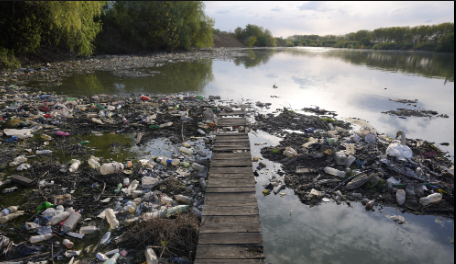The Earth system is under unprecedented pressure from human activity and is in danger of losing the relatively stable conditions that allowed modern civilizations to evolve over the past 10,000 years, according to a recent study.
Based on a concept introduced in 2009 to define Earth’s environmental limits, the updated study found that six of the nine planetary “boundaries” are transgressed, indicating that Earth is “well outside of the safe operating space for humanity.”
The number of boundaries that have been crossed since 2009 has now doubled, according to the Stockholm Resilience Centre, which was involved in the study and the concept’s initial development.
Human activities have negatively affected the environmental variability that has been typical during the current Holocene Period, which began at the end of the last ice age and set the conditions for agriculture and the development of civilizations, according to the study. This influence has heavily perturbed the nine processes that are critical for maintaining the stability and resilience of the Earth system, it said.
The categories exceeding the limits are biosphere integrity, climate change, novel entities (such as synthetic chemicals), freshwater change, land system change, and biochemical flows. Ocean acidification is close to overstepping its boundary, while stratospheric ozone levels represent the only success story, recovering following the phasing-out of ozone-depleting substances, in line with the Montreal Protocol.
“This latest environmental snapshot demonstrates again that unsustainable practices in one ecosystem can lead to degradation in others,” says Éliane Ubalijoro, chief executive officer of the Center for International Forestry Research and World Agroforestry (CIFOR-ICRAF), who did not contribute to the study. “Fortunately, the flipside to this negative cycle is that solutions in one problem area, such as land system change, can have positive knock-on effects that benefit other parts of the Earth system.”
Land system change
One of the most powerful means to combat climate change – among the six categories that have breached their limits – involves respecting the land system change boundary, according to the study’s authors. Bringing total global forest cover back to the levels of the late 20th century would provide a substantial cumulative sink for atmospheric carbon dioxide, they said.
Human survival is closely linked to trees and forests. They absorb carbon dioxide, regulate the climate, and provide freshwater, food, shelter, energy, medicines, and livelihoods to millions of people. These ecosystem services are essential to mitigating climate change, preventing biodiversity loss, and safeguarding human well-being.
CIFOR-ICRAF scientists are helping address deforestation and biodiversity loss through targeted research and engagement across multiple thematic areas, particularly through work on tree genetic resources, landscape restoration, sustainable forest management, as well as soil and land health.
Nature-based solutions
While it targets five global challenges, CIFOR-ICRAF also provides evidence and analysis of how nature-based solutions – such as sustainable forest and wetland management, agroforestry and landscape restoration – can help mitigate climate change and enable local people to adapt to its effects. This work also assists countries as they strive to meet their commitments under the Paris Agreement.
To turn the science into solutions that will help humanity achieve the Sustainable Development Goals by 2030, CIFOR-ICRAF recognizes the importance of equity and inclusion. This means engaging with local communities in the Global South that are disproportionately affected by poverty, climate change, deforestation, and land degradation, and particularly prioritizing the participation of women, youth, and smallholder farmers that would otherwise be excluded from decision-making processes.
“By transforming approaches to land management and food production, we have helped governments, Indigenous Peoples, and local communities protect and restore ecosystems, while addressing multiple crises ranging from climate change and poverty through to biodiversity loss and desertification – all in an equitable way,” Ubalijoro says.
One system
CIFOR-ICRAF’s integrated approach to dealing with interconnected challenges echoes the authors’ view that the effects of human interaction with the nine planetary boundaries should be considered within the context of the Earth’s system as a whole, rather than as separate issues.
There is an urgent need for more powerful scientific and policy tools for analyzing the entire integrated Earth system with reliability and regularity – and guiding political processes to prevent altering the state of that system beyond levels tolerable for today’s societies, according to the study.
“This update of the planetary boundaries framework may serve as a renewed wake-up call to humankind that Earth is in danger of leaving its Holocene-like state,” the authors wrote. “It may also contribute to guiding the substantial human opportunities for sustainable development on our planet.”
for more visit forestsnews@cifor-icraf.org

